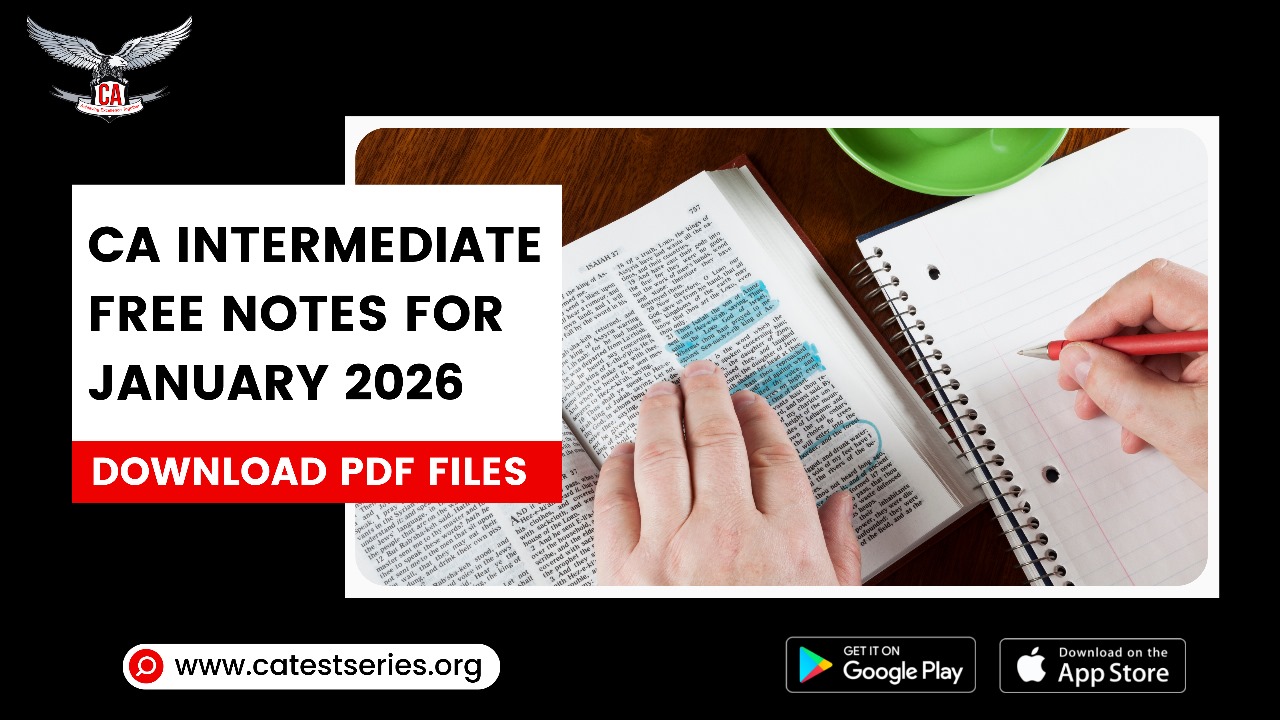CA INTER NOTES: Principle and Practice of Accounting
Chapter 1st Theoretical Framework
Unit 1 Meaning and Scope of Accounting
According is a process that helps to record, summarise, and analyze the data that concerns financial transactions. The first function of accounting is to record data from the different transcriptions. There are three ways to record data:
- Putting up a system that will help you to maintain the record.
- Tracking financial transactions.
- Aggregating the report to present a final set of financial reports.
However, they are just raw data, and the raw data is not significant to the organization, so the accountant divides that raw data into several categories, and the transcription recording is then summarized. At the end, the owner receives an annual report that summarizes all of their performance. After recording the summary, draw a conclusion so that management can check the positive and negative points. To analyze all these, compare profits, sales, and equity to one another. The basic fundamentals of accounting are-
ALOE
- A = Asset
- L = Liabilities
- OE = owner equity
Asset = Asset is the item that belongs to you, like a car or house.
Liabilities = whatever you own is a liability but an asset.
Owner equity = the total amount of investment that an organization invest in owners equity.
Scope of Accounting
- Selling and distribution costs.
- All expenses.
- Administration overhead, such as power rent, salaries of company officials, etc.
- Plan for future growth.
- Prepare a budget for the future.
- Current profit.
- To forecast the income statement.
Unit 2 According to Concepts, Principles and Conventions
The money measurement concept: In this business record, only those transactions can be expressed in monetary terms, like the purchase and sale of Gods.
- Going Concern Concept: It means that business would run for a long time and it will not liquidate in future.
- Consistency: This means that an organization should be consistent in its accounting practices and policies. It means that accounting information provided by an organization would be beneficial only when it allows its users to make comparisons between the statements of different years.
- Matching: It means that an organization should recognize its expenses in the same financial year.
- Full disclosure: It stands for that an organization should have to disclose all their facts regarding its financial performance.
- Revenue Recognition: It is suggested that an organization record its revenue from business.
- Materiality: It is about an organization only having to focus on material facts
- Objectivity: it is about that an organization should have to record transactions in an objective manner.
- Accounting Period: It defines the time during which an organization prepared its financial segments that whatever they have earned profit or loss.
- Dual Aspect: It means two accounts will be affected by a single account.
- Cost Concept: It means that an organization should have to record all its assets and their purchase price in the book of account.
- Business Entity: It means that the business and its owner are treated separately.
- Conservatism Concept: This organization should adopt a conscious approach and should not record its profile until it realises it.
Unit 3 Accounting Terminology-Glossary
Accounting terminology is the language of accounting that describes accounting concepts and terms such as income, expenses, liabilities, etc. Glossary is a book of account that provides definitions for complicated words.
- Accounting: Recording and reporting of financial transactions.
- Account Payable: Account owned by the creditor.
- Account Received: Claim against the debtor.
- Accountant: Person skills.
- Asset: An economic recourse.
- Bank Statement: A periodic statement.
- Budget: Financial plan.
- Cash: Asset account of a balance sheet.
- Cash Basis: Method of bookkeeping.
- Credit: Entry on the right side of the bookkeeping system.
- Debit: Entry on the left side of the bookkeeping system.
- Deficit: Financial storage.
- Equity: Residual interest.
- Expense: Something spent on a specific item.
- Finance: The science of management.
- Fund Accounting: A method of accounting.
- Goodwill: Premium paid in the acquisition of an entity over the fair value.
- Liability: Debts own by an entity.
- Matching Principles: A fundamental concept of basic accounting.
- Net Asset: Excess of the value of security owned.
- Net income: Excess of total revenue.
- Profit: Positive difference in selling goods.
- Receivable: The amount of money due from the customer.
Unit 4 Capital and Revenue Expenditures and Receipts
The main function of accounting includes profit and loss; at the end of the period, the distinction between capital and revenue is important for the income statement as well as the position statement; they can be divided into two parts:
1. Capital and Revenue Expenditures
2. Capital and Revenue Receipts
1.1 The Capital Expenditure- Expenditure that acquires capital Asset is capital expenditure; it is used only for business, not for sale.
1.2 The Revenue Expenditure- When the expenditure is made not for the purpose of business and working with the view of profit is revenue expenditure.
1.3 The Deferred Expenditure- It is a revenue expenditure by nature and and can not be treated as a revenue expenditure and it is benefits is not fully exhausted in the accounting period.
2. The Capital and Revenue Receipts
The capital and revenue receipts are important because they are taken to the balance sheet, and revenue receipts are taken to the trading and profit and loss accounts.
Unit 5 Contingent Asset and Contingent Liabilities
The contingent Asset- They recognize the amount of cash generated from the event and remove it from an account, providing the future cost of possible contingent liabilities. There are two categories of contingent Asset:
- Asset with liability (debtors)
- Asset without liability (liabilities)
Asset with liability: In this liabilities is attached to them and they are recorded and disclosed in the balance sheet.
Assets without liability: They are not allowed, but some specific exceptions can be applied.
The contingent liabilities: They are accountancy terms; obligation that arise from a contingency such as legal obligation that pay compensation for damage.
Unit 6 Accounting Policies
Accounting Policies are the rules and guidelines of the Company that present and prepare its financial statements. Accounting policies can be widely, But all are included in standards dictates; some of the key policies of the Company are given below:
- Valuation of Fixed Asset
- Valuations of Investment.
- Treatment of Goodwill.
- Recognize the profile of long-term contracts.
- Treatment of leases.
Unit 7 Accounting as a Measurement Discipline - Valuation Principles, Accounting Estimate
Measurement is a vital aspect of accounting; in this, transactions and events are measured in terms of money. The three elements of measurement are:
- Identification of object and event.
- Selection of standard of scale to be used.
- Evaluation of dimension of measurement standard or scale.
The four generally accepted measurement bases or valuation principles:
- Historical cost.
- Current cost.
- Realizable value.
- Present value.
Unit 8 Accounting Standards
Accounting standards is a set of practices and policies that used to systematize bookkeeping and other accounting functions. It applies into the full breadth of an entity financial, liabilities, revenue, expenses, Asset and shareholder equity.
Unit 9 Indian Accounting Standards
They are IFRS standards issued by the central government of India. These standards are important for certain Indian companies. The objective of Indian accounting standards:
- International coverage.
- Transparency and accountability
- Uniformity and consistency
- Investor protection
- Facilitation of cross-border transactions
- Reliability and credibility












